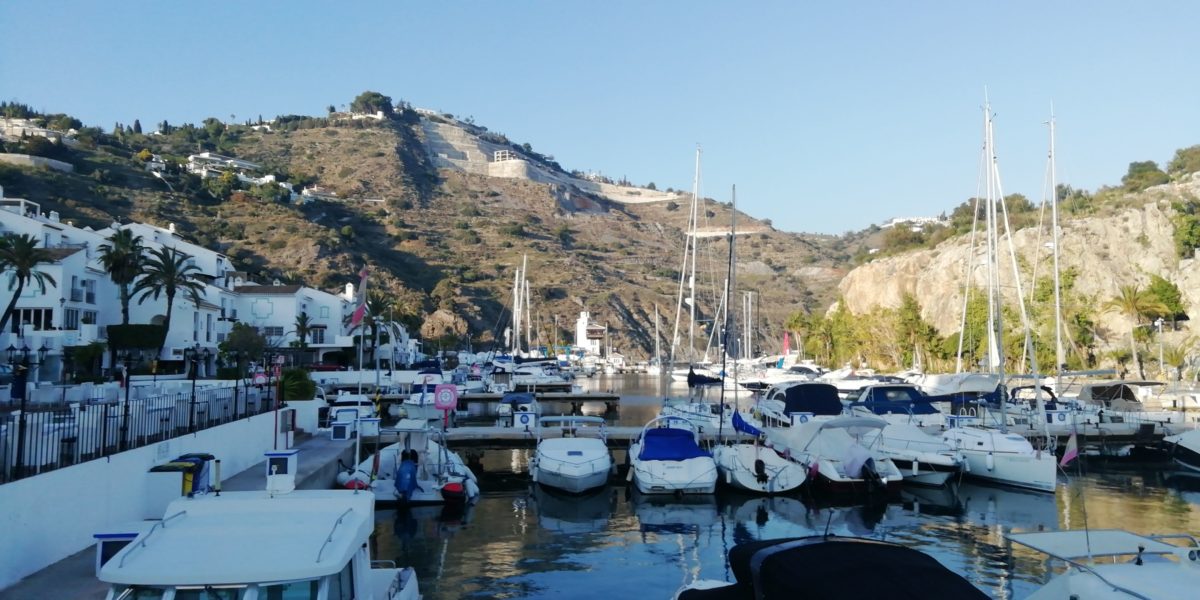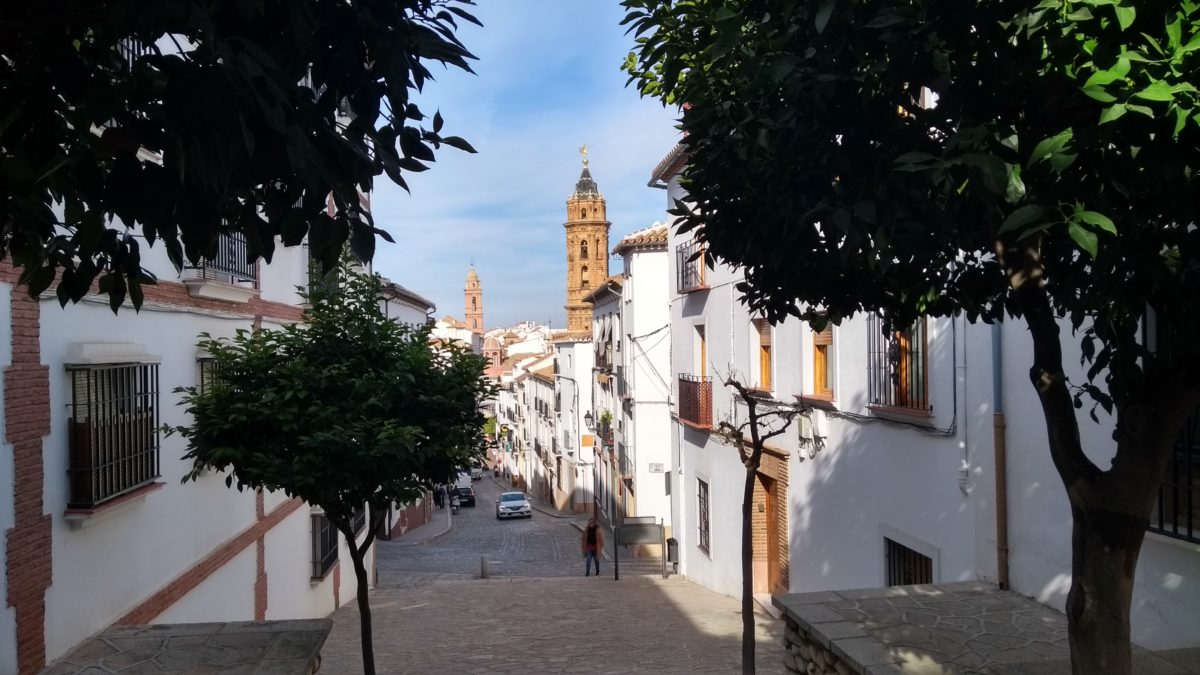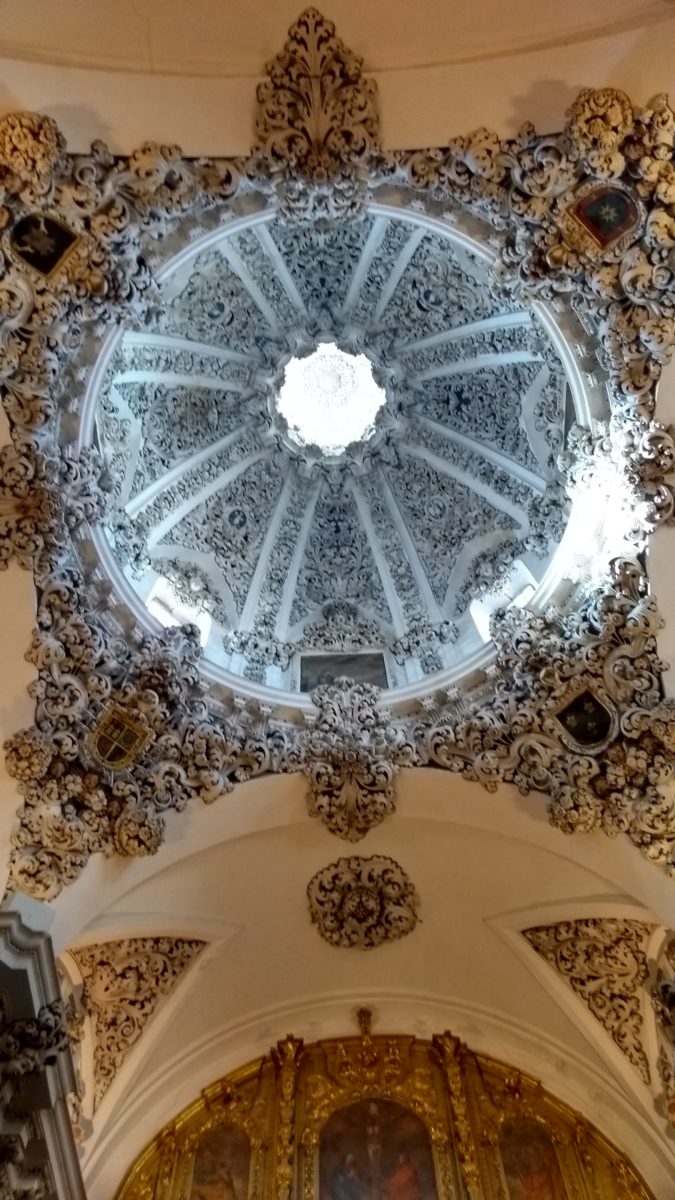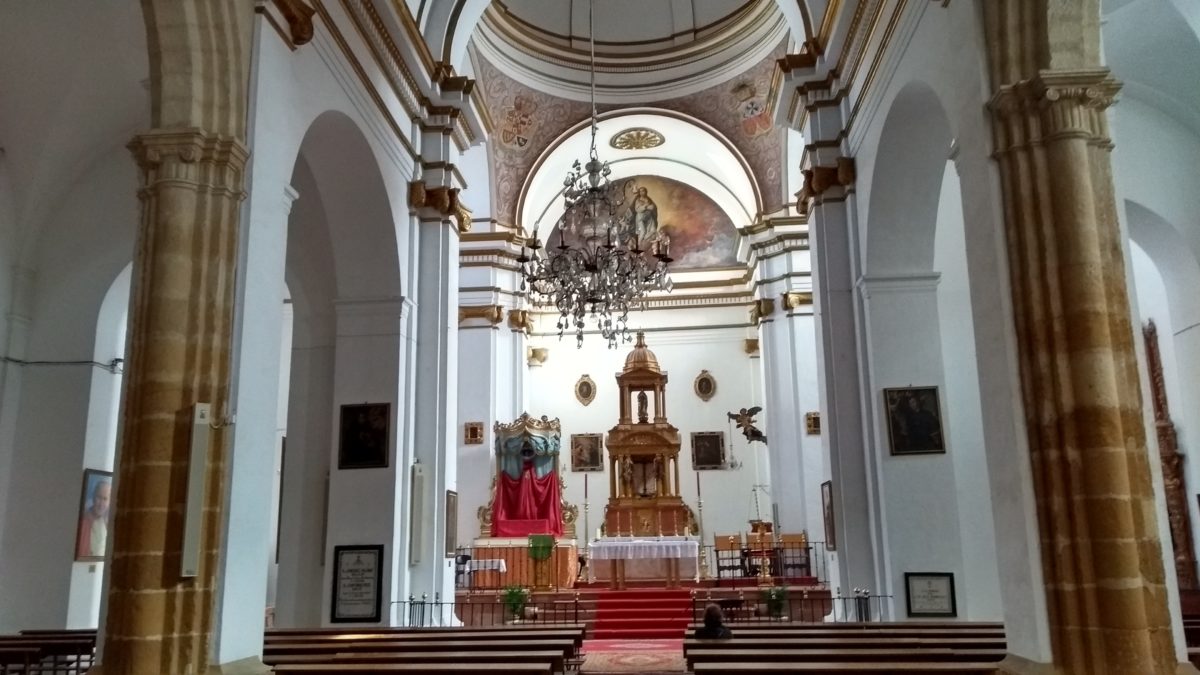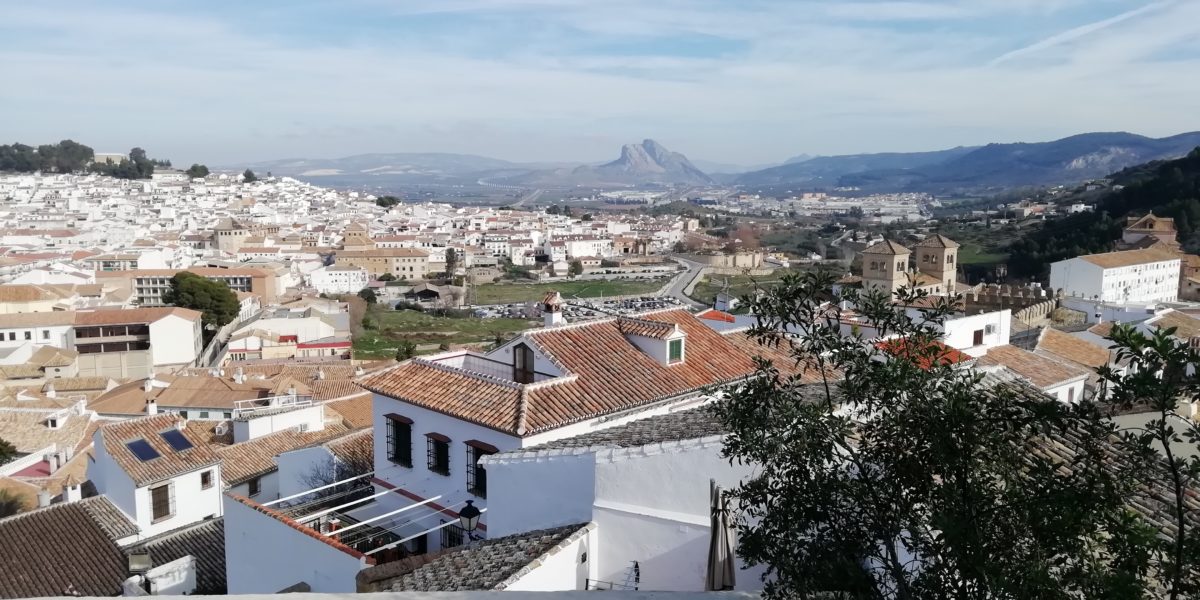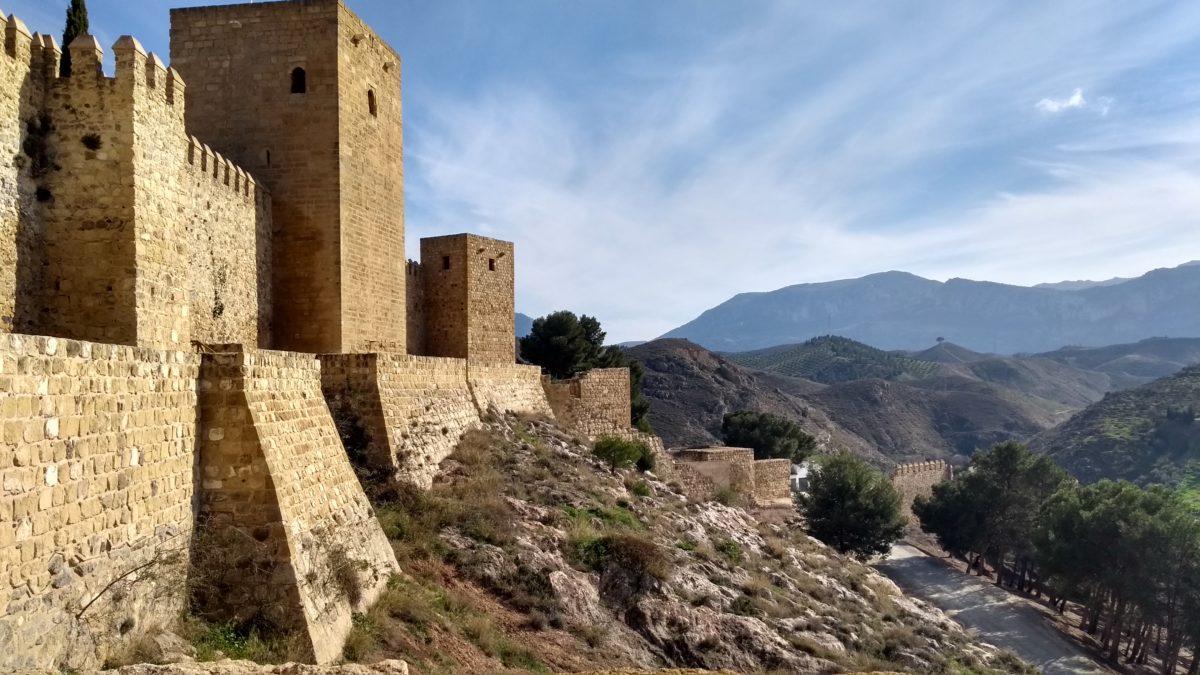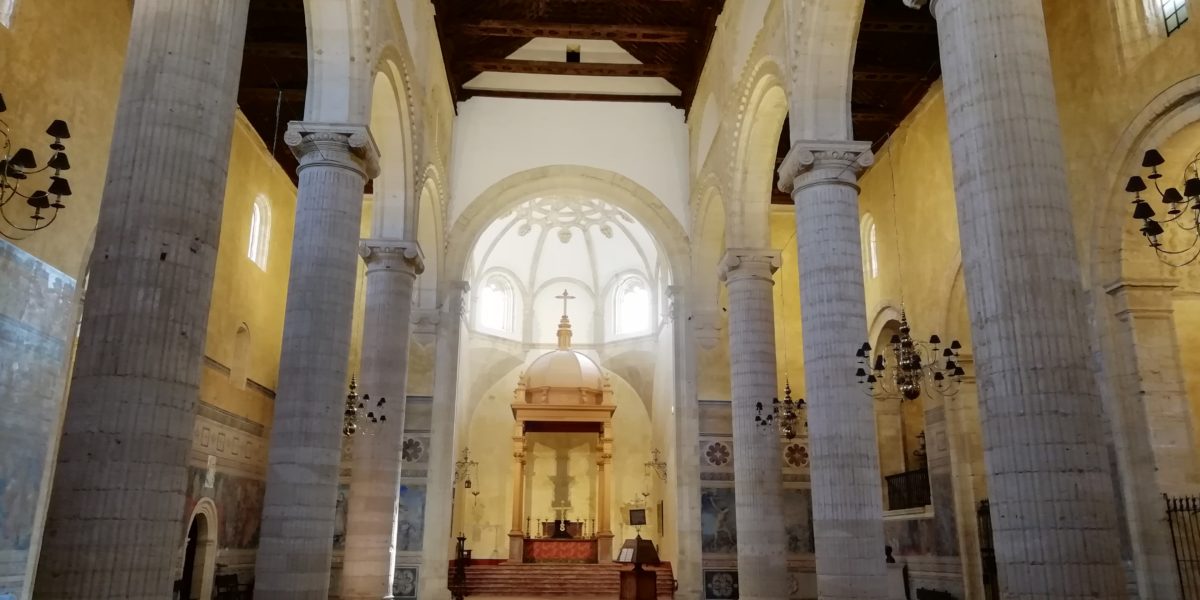Some of the best village ramparts in France
We had two nights at Marine del Este and a lovely quiet and WARM day between. It was really nice doing very little in such beautiful surroundings and having nice warm nights too. The car park got quite busy with scuba diving groups during the mornings (from 8am!) but they left mid afternoon. The second night there were six vans parked up including several old British vans with a large number of small children between them. They were a busy group who had come to meet with local friends so we did not get to talk to them much.
We left our “paradise beach resort” in good time on Sunday morning and wound up the narrow, twisty road to the main road and from there on to the E15 motorway. At Velez Malaga we turned off the motorway on to lesser road for the climb up into the mountains to go to Antequera. Not quite such a dramatic road as the one we followed to get here but still interesting. Our coffee stop was near a large reservoir that looked to be very low and maybe had as little as 25% of its capacity. I find this slightly worrying as if that is to fill up again before the summer then a whole lot of rain is coming in the next few months!
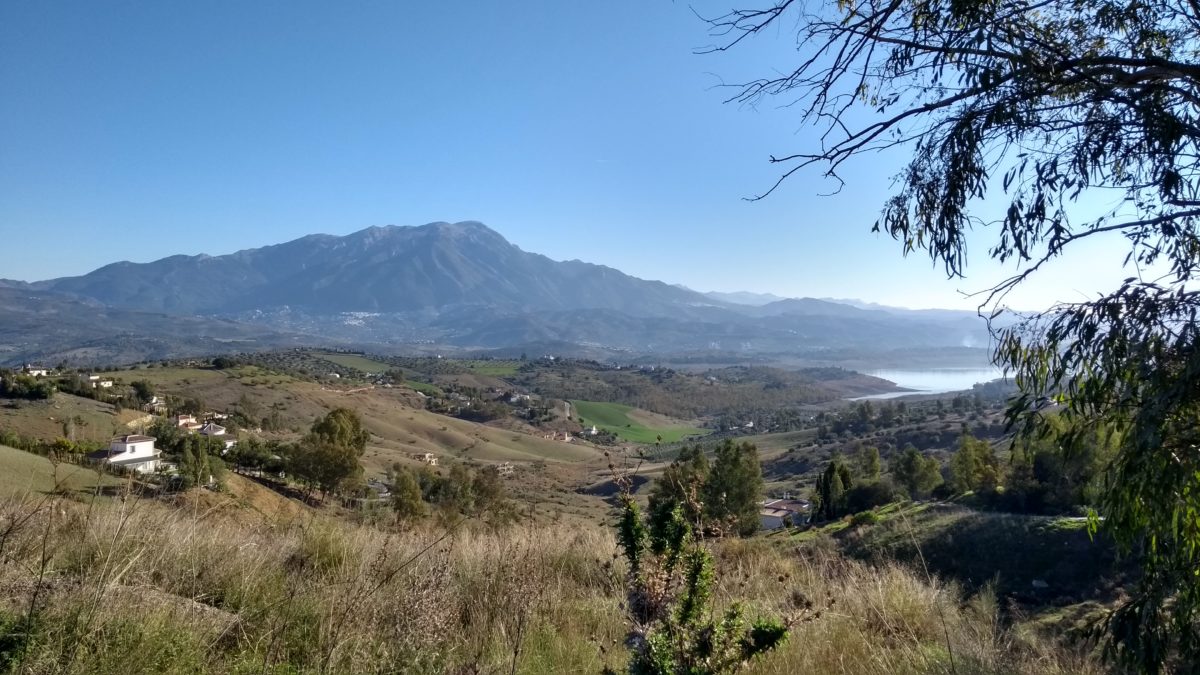
Antequera is a medium sized town built on an ancient site. The prehistoric burial cairns are a World Heritage Site (off to see them tomorrow I hope) and they date form 6,500BC, there are Roman remains, Visigoth remains (post Roman), Moorish remains from the C10 – C15 and plenty since! We are here partly to see the sights but also because they have a free aire with free services on the edge of the town so we can park up safely, service Bertie and walk in to town easily. There is even a laundrette near by and two supermarkets within a short walk! The only disadvantage is that we are parked by a high wall which blocks the evening sunshine meaning Bertie stops making solar electricity after about 4:30pm. These short days are limiting how much power we can put back into Bertie’s batteries when we are parked up and stationary.
The aire is quite busy with vans from all over including several British vans so plenty of people to talk to. Our neighbour last night was Bernard – a very friendly German from Baden Wurtemburg who gave us a list of places to see when we mentioned we are planning a German trip next! He lives full time in his van and was really chatty and fortunately spoke good English.
We had a quiet day on Monday doing a little exploring, shopping at Mercadona and getting the laundry done! There is free water and waste disposal here so we are in no rush.
Today was a day out at the Alcazaba – the moorish fortress above the town. Most larger moorish settlements are built around a citadel and fortress. A bit like many English towns that sprang up around a Norman castle. The most famous of course is the Alhambra but most towns have one or had one. Even Abla had the remains of an Alcazaba and so did Terque and Ricote but in both these cases there is almost nothing left and Almería has a super Alcazaba. Antequera Alcazaba is well restored and for the princely sum of €3 each (OAP rate) we got to visit both that and the huge church built next to it with an English audioguide. On our way through the town this morning we passed one of the old churches (Iglesias de San Juan de Dios) and was pleased to see it was open so of course we went in. WOW it was so ornately decorated. Here the charge was €1 and that included an audioguide too. Really nice lady (brought up in Portsmouth!) sold us our tickets and also gave us a map of Antequera with all the main sites marked. She recommended a visit to the main church (San Sebastian) too. Photos of San Juan church below
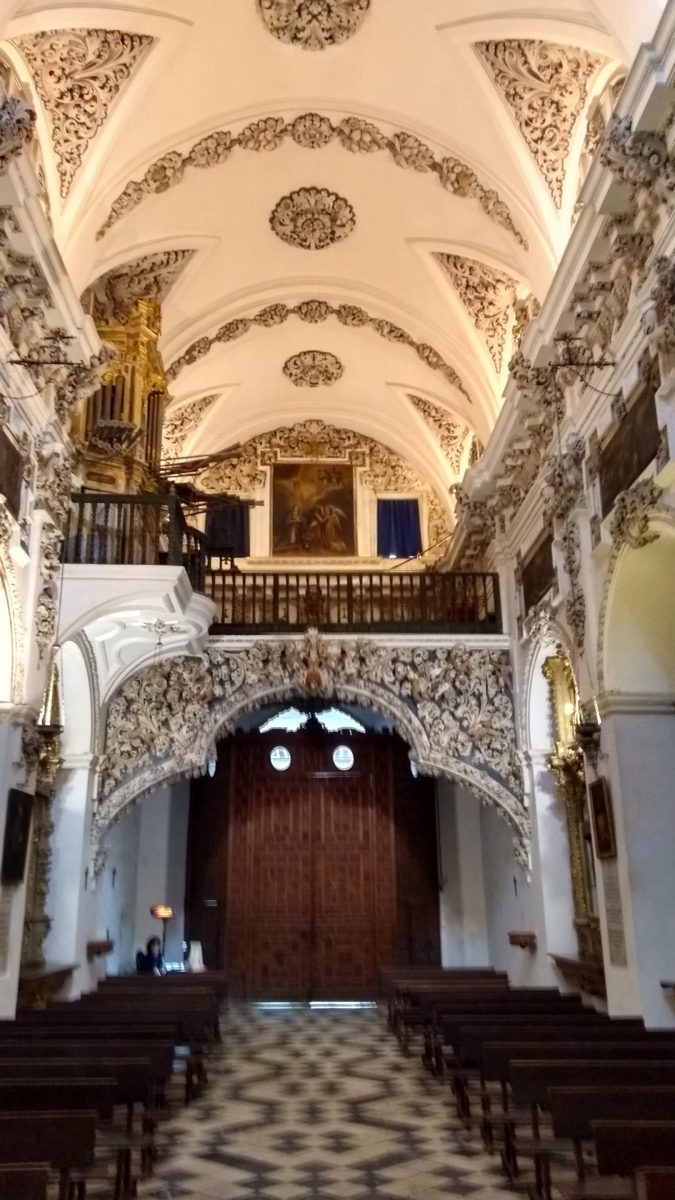
The Collegiate Church of San Sebastián was a less elaborate building but filled with amazing art and imagery and hugely ornate chapels and altarpieces. The layout of the church was just like the cathedral in Almería and is a little different from the form we are used to. Photos below.
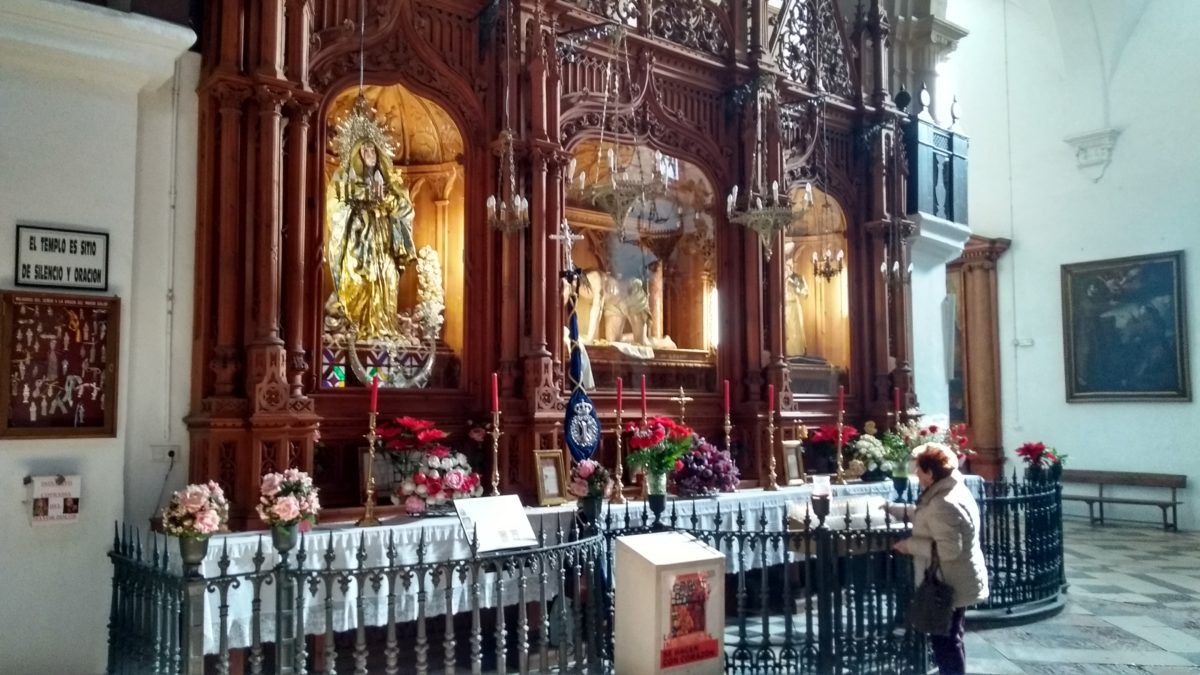
From here it was a short walk up to the Alcazaba – and quite a bit up it was too. We paid our €6 and collected our audioguides and set off. The guide was quite good and told us about the early origins of some of the remains and took us on a route around the Alcazaba although we actually wandered off along all the all the paths we could find as well. At the top of the Alcazaba are the remains of the old fortress and are really impressive. We wandered around these quite a bit and compared them with the similar buildings we have seen both at the Alhambra and also at Almería. We climbed right up to the top of the main tower and found ourselves directly under the huge bell – just as it tolled at 1pm. This bell dates from C16 and is one of the largest in Andalusia. I just wish I had had some warning!
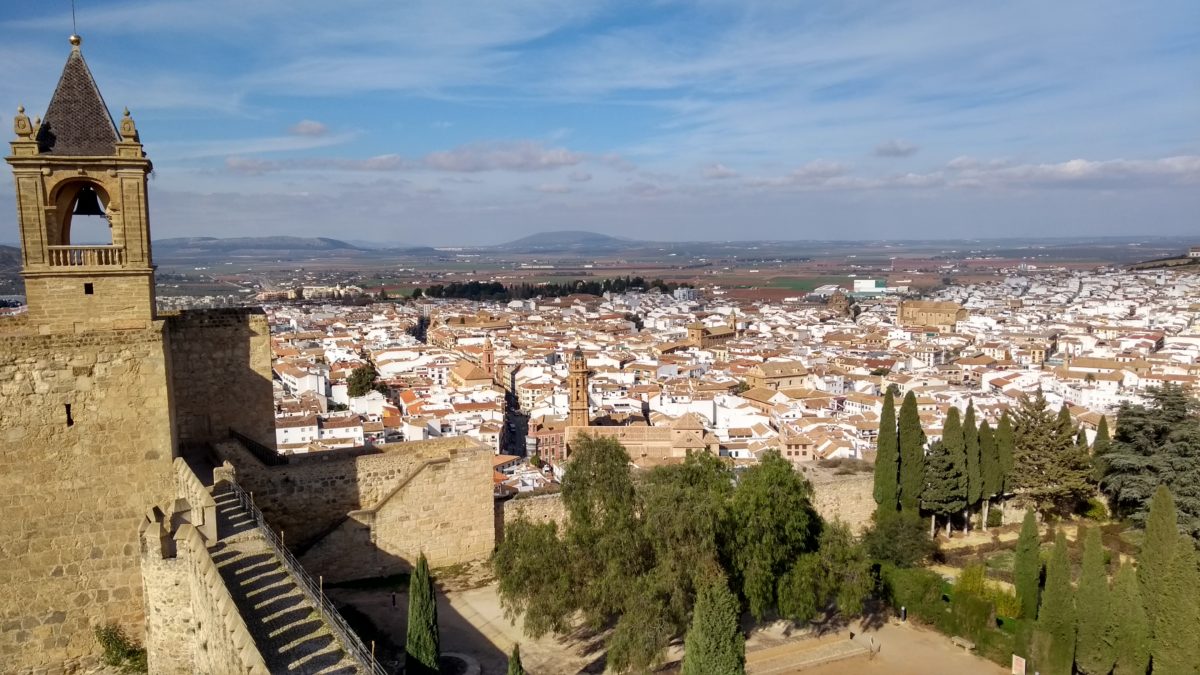
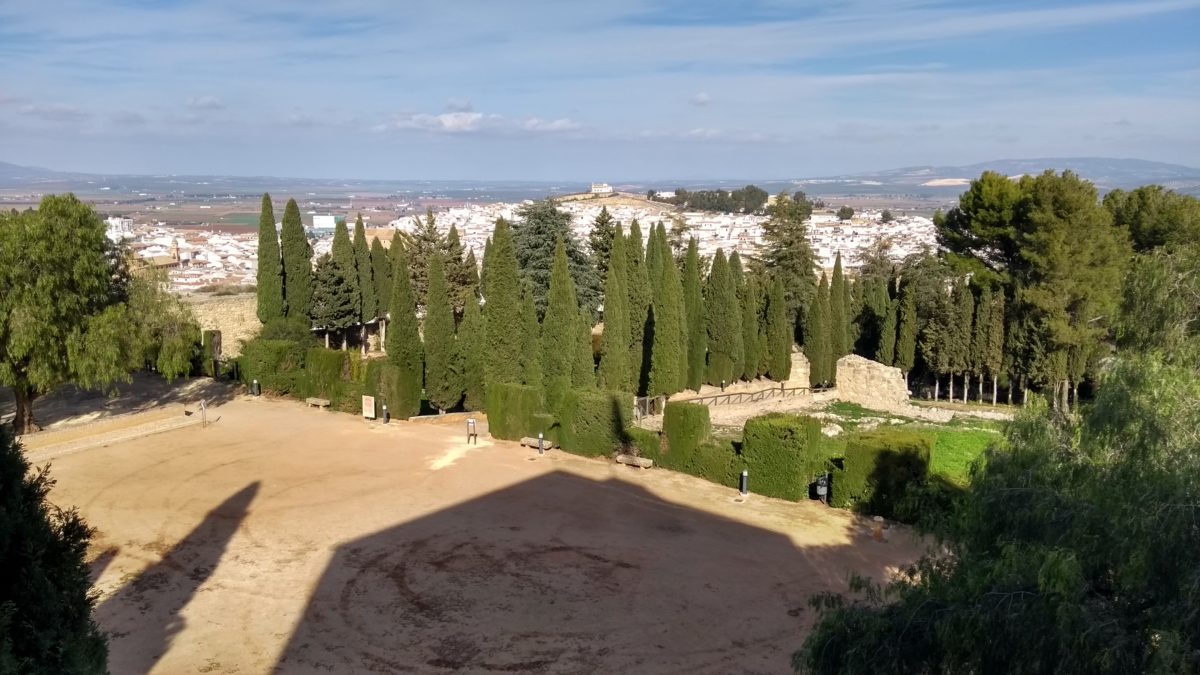
At the far end of the fortress are some remains of a roman tomb with the roman concrete walls in sharp contrast to the arabic masonry beside them. Walking back along the eastern ramparts looking across the steep valley to the rising mounatins behind we were delighted to watch a herd of sheep being taken up a small lane. The sounds of their bells ringing clearly across the valley sounded remarkably like Austrian cow bells.
Our ticket included a visit to the large church of St Mary that was erected beside the Alcazaba in the C16. No longer used as a church as its role was taken over by San Sebastian’s church that we visited earlier. There is much less decoration here and thus the beauty of the building itself was easier to see. Our phones were not really able to capture the scale of this place.
Back at Bertie it is time to write up this blog and to decide what we are going to do next. Ideally we would like to visit the ancient burial mounds (they call them Dolmens) tomorrow – may be on our way somewhere else. We rarely plan much more than a few days ahead but time is running on and we are starting to think about how we will fit all that we want to see in the two months that remain to us. I am aware that we have covered over 4,500kms and probably have at least 4,000kms to do to get home. We need to come up with a plan – watch this space!















